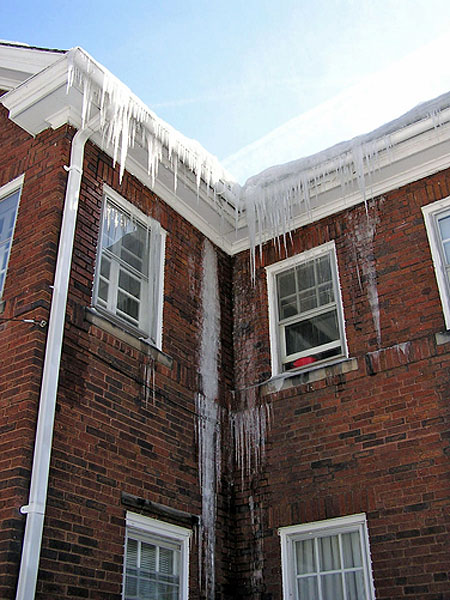
Roof and Attic Ventilation
- Category: Attic Ventilation Help
- Written by Administrator
Attic Ventilation Airflow Basics
Attic Ventilation:
-
Reduces energy costs
-
Reduces or prevents ice dams and leaks in winter
-
Prolongs the life of shingle and roof components
-
Prevents condensation and mold in the attic
Understanding how the air and wind flows in and around your house and attic is important when deciding on how to properly ventilate your roof and attic.
Soffit Vents and Attic Ventilation
- Category: Attic Ventilation Help
- Written by Administrator
Ice Dams? Roof Leaks? Attic Condensation? Mold?
Are you experiencing problems with ice backup dams and a leaking roof?

Soffit vents are an important component of the attic ventilation system. They are the source of cool dry air that replaces the warm moist air which is being exhausted by the ridge, gable, or other venting installed on the roof.
Roof Ventilation | Hip Roof Venting
- Category: Attic Ventilation Help
- Written by Administrator
Venting a hip roof with limited exhaust due to reduced ridge vent area.
Venting a hip (pyramid) style roof with standard ridge vent and soffit venting is a bit more of a challenge than a standard gable end roof. Assuming you actually need more ventilation.
Roof Ventilation | Powered Attic Fans
- Category: Attic Ventilation Help
- Written by Administrator
Mixing ridge, gable and powered attic vents.
Installing and using a powered attic roof ventilator to ventilate an attic space is often regarded as poor practice by some roofing contractors.
Their reasoning is the same as that when they advise to close the gable end vents when installing ridge vents. The powered attic fan will “short circuit” the ventilation system by drawing air from the closest source of air, which would be the ridge vent. They assume that because the ridge vent is closer, it is also the path of least resistance for airflow. And they assume that the force of the attic fans’ volume is great enough to pull not only air, but outside weather elements such as rain, snow and debris into the attic.
Roof Ventilation | The Short Circuit Myth
- Category: Attic Ventilation Help
- Written by Administrator
Attic Ventilation – Debunking the “Short Circuit” Myth | Save time and money by keeping your existing vents and adding ridge and soffit vents.
If your home has existing roof vents such as gable end or “turtle” vents, a majority of roofing contractors will advise you to remove or close those vents when installing new ridge and soffit venting.
The reason? An erroneous belief that air will circulate between the ridge vent and any other static vent, instead of removing the warm air inside your attic. Thus, allowing hot air to remain in the attic space and in effect, “short circuiting” the ventilation system. This reasoning flies in the face of the laws of physics and common sense.


